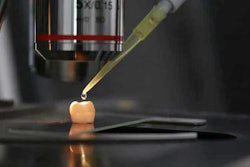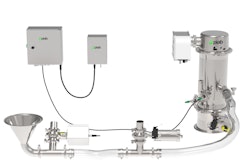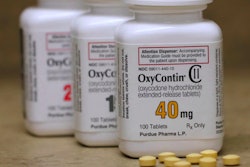
Click here to read about the original Gx RTF ClearJect plastic syringe set.
Gerresheimer a provider of glass and plastic products for the pharma and healthcare industy, is expanding its range of pre-fillable polymer syringes to include a new product: the Gx RTF ClearJect polymer needle syringe, 2.25 ml. Like the 1.0 ml syringe, this syringe will be produced in Pfreimd, Germany.
The material used for the syringe is a polymer called COP (cyclic olefin polymer). It is designed for use as primary packaging for sophisticated medications, especially for sensitive, biologicals, biosimilars, and biobetters. The product was developed in close cooperation between two Gerresheimer locations in order to create synergy between the syringe experts in Bünde and the plastic experts in Wackersdorf, Germany.
The Gx RTF ClearJect COP SIN of Gerresheimer Bünde GmbH is now available in the sizes 1.0 ml long and 2.25 ml. The design is inspired by ISO 11040-6 and registered. The syringe is equipped with a 27-gauge, 1/2-inch (12.7 mm), thin-walled stainless-steel needle with three bevels.
COP is meant to not release tungsten metal ions into the medication solution as glass syringes can, which is a major concern for some. Since the entire syringe, including the insert-molded needle, is produced in a single step, the product, is designed to be free of tungsten and adhesives. The material has a high pH tolerance and the pH value does not change while in storage. The oxygen permeation rate is low in comparison to other plastics, and the values for extractables and leachables are low.
Another iargument in favor of the Gx RTF ClearJect needle syringe is its end-user safety. COP is particularly break-resistant, making it suitable for packaging aggressive or toxic materials. The syringes are siliconized with a controlled quantity of the highly viscous Dow Corning 360 MD (12,500 cST) silicone oil, in order to have reliable syringe functionality with low breakaway and sliding forces with the lowest possible particle load.
Production in the injection molding process is meant to ensure precise dimensions. The dead volume in the syringe is also minimized, reducing overall waste of the costly drugs, according to the company. The material also enables a broad range of design options, which make it more applicable to customer-specific requirements. The syringes are engineered so that they can be used in autoinjectors as well.
This syringe system, like the 1.0 ml syringe, is made to be economical as the COP syringe body is designed to use commercially available standard components throughout. This starts with the use of standard cannulas and continues with the piston rods, piston plungers, backstops and closure systems used.






















